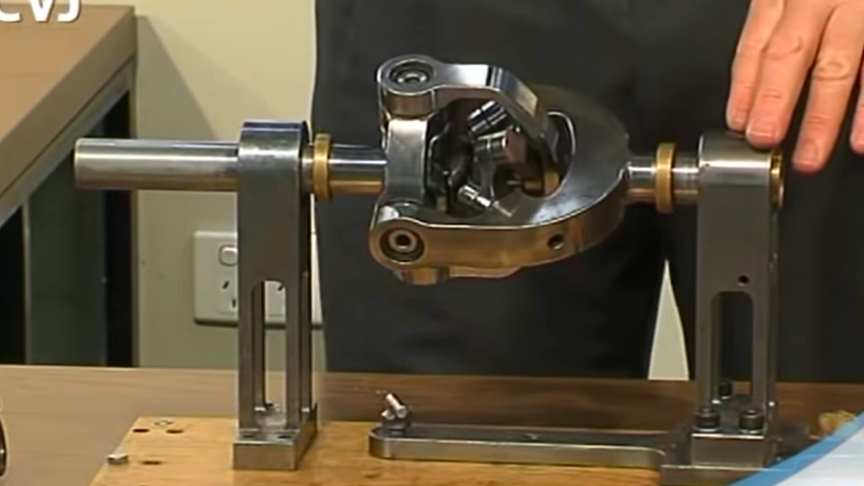Constant-velocity joints (also known as homokinetic or CV joints) allow a drive shaft to transmit power through a variable angle, at constant rotational speed, without an appreciable increase in friction or play.The Thompson constant velocity joint(TCVJ), also known as a Thompson coupling, assembles two cardan joints within each other to eliminate the intermediate shaft.
source/image(PrtSc): ThompsonCouplings
A control yoke is added to keep the input and output shafts aligned. The control yoke uses a spherical pantograph scissor mechanism to bisect the angle between the input and output shafts and to maintain the joints at a relative phase angle of zero.
The alignment ensures constant angular velocity at all joint angles. Eliminating the intermediate shaft and keeping the input shafts aligned in the homokinetic plane greatly reduces the induced shear stresses and vibration inherent in double cardan shafts.
Advertisement
While the geometric configuration does not maintain constant velocity for the control yoke that aligns the cardan joints, the control yoke has minimal inertia and generates little vibration./wikipedia











